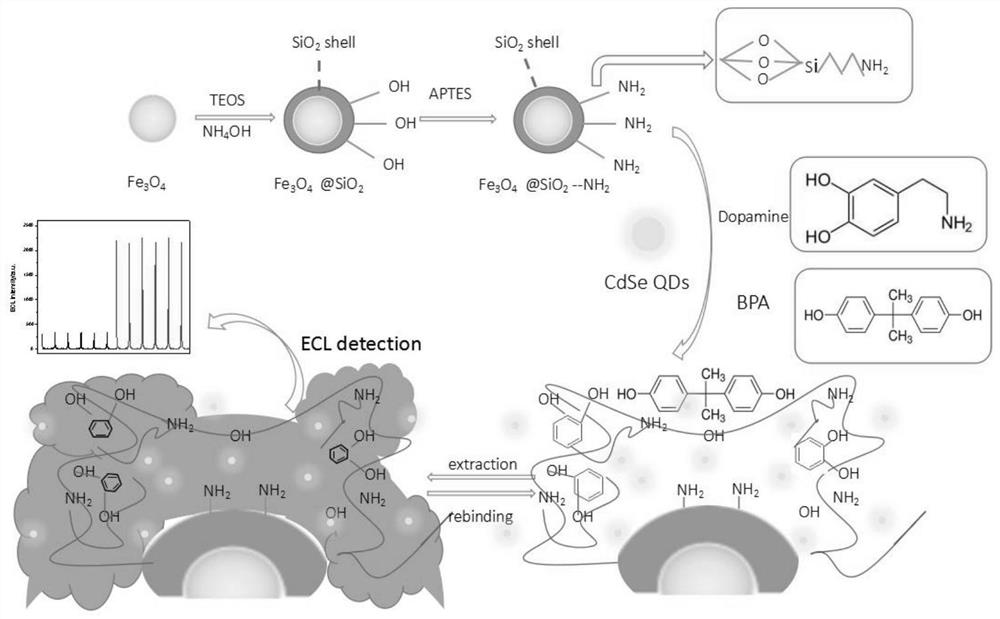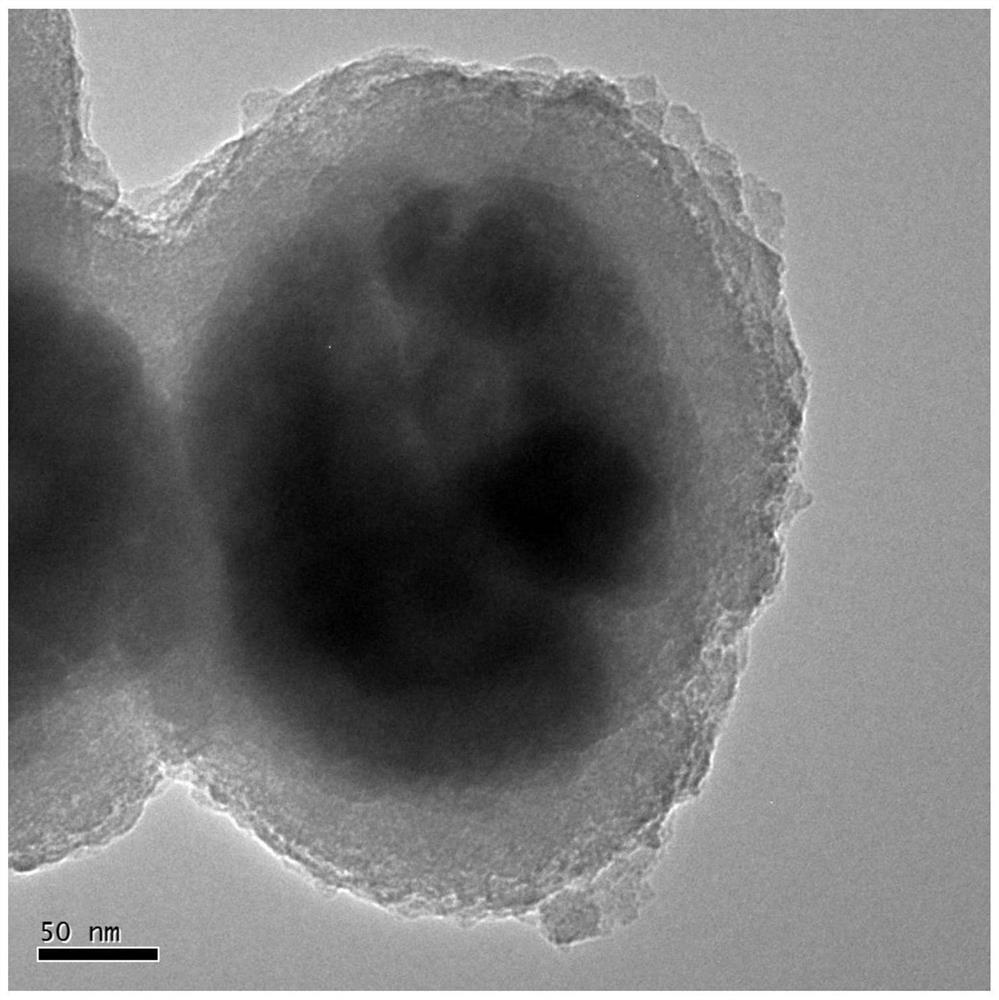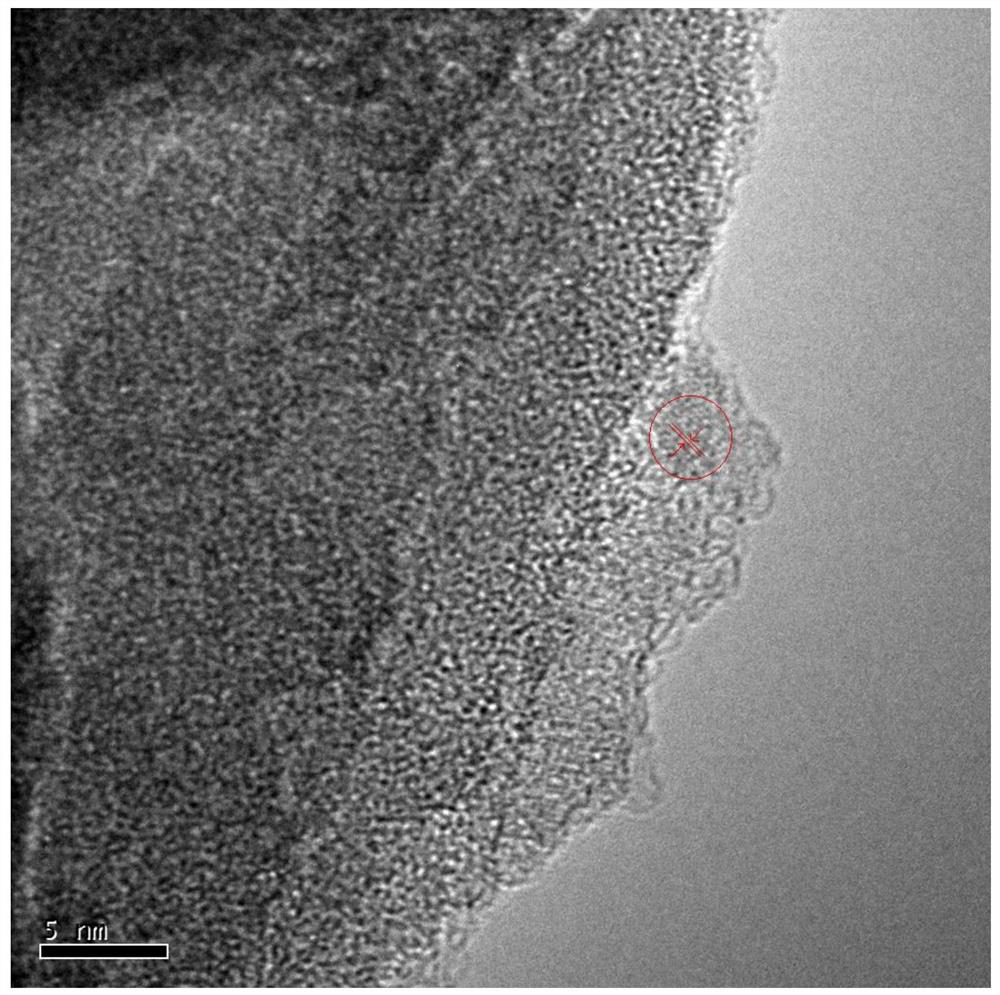Magnetic quantum dot molecular imprinting material and application for detecting bisphenol A
A technology of molecular imprinting and quantum dots, applied in the field of analysis and sensing, can solve problems such as complex polymerization process, long aggregation time, and small detection range
- Summary
- Abstract
- Description
- Claims
- Application Information
AI Technical Summary
Problems solved by technology
Method used
Image
Examples
Embodiment 1
[0057] (1) Synthesis of cadmium selenide quantum dots
[0058] The specific process is as follows: the CdCl 2 2.5H 2 O and L-cysteine (the molar ratio of which is 3:1) and 150 mL of deionized water were mixed, the pH was adjusted to 10 by 0.1M NaOH, and the cadmium (Cd) source was obtained by magnetic stirring reaction under the protection of nitrogen. Simultaneously synthesized selenium (Se) source: In a round bottom flask, Se: NaBH 4 =1.5 (molar ratio), add 10 mL of deionized water, heat to 40° C., and fill with nitrogen gas for 30 min. The synthesized Se source solution was poured into the Cd source solution, heated to 90°C, condensed and refluxed for reaction. The obtained product was settled with ethanol and centrifuged and washed three times with ethanol, dissolved in water and stored in a refrigerator at 4°C in the dark.
[0059] (2) Fe 3 o 4 @SiO 2 -NH 2 Synthesis
[0060] FeCl 3 ·6H 2 O (1.35g) was put into a 100mL dry beaker, 50mL of ethylene glycol was ...
Embodiment 2
[0074] (1) Synthesis of cadmium selenide quantum dots
[0075] The specific process is as follows: the CdCl 2 2.5H 2 O and L-cysteine (the molar ratio of which is 3:1) and 150 mL of deionized water were mixed, the pH was adjusted to 10 by 0.1 M NaOH, and the cadmium (Cd) source was obtained by magnetic stirring reaction under the protection of nitrogen. Simultaneously synthesized selenium (Se) source: In a round bottom flask, Se: NaBH 4 =1.5 (molar ratio), add 10 mL of deionized water, heat to 40° C., and fill with nitrogen gas for 30 min. The synthesized Se source solution was poured into the Cd source solution, heated to 90°C, condensed and refluxed for reaction. The obtained product was settled with ethanol and centrifuged and washed three times with ethanol, dissolved in water and stored in a refrigerator at 4°C in the dark.
[0076] (2) Fe 3 o 4 @SiO 2 -NH 2 Synthesis
[0077] FeCl 3 ·6H 2O (1.35g) was put into a 100mL dry beaker, 50mL of ethylene glycol was ...
Embodiment 3
[0084] (1) Synthesis of cadmium selenide quantum dots
[0085] The specific process is as follows: the CdCl 2 2.5H 2 O and L-cysteine (the molar ratio of which is 3:1) and 150 mL of deionized water were mixed, the pH was adjusted to 10 by 0.1M NaOH, and the cadmium (Cd) source was obtained by magnetic stirring reaction under the protection of nitrogen. Simultaneously synthesized selenium (Se) source: In a round bottom flask, Se: NaBH 4 =1.5 (molar ratio), add 10 mL of deionized water, heat to 40° C., and fill with nitrogen gas for 30 min. The synthesized Se source solution was poured into the Cd source solution, heated to 90°C, condensed and refluxed for reaction. The obtained product was precipitated with ethanol and washed three times by centrifugation with ethanol, dissolved in water and stored in a refrigerator at 4°C in the dark.
[0086] (2) Fe 3 o 4 @SiO 2 -NH 2 Synthesis
[0087] FeCl 3 ·6H 2 O (1.35g) was put into a 100mL dry beaker, 50mL of ethylene glyc...
PUM
| Property | Measurement | Unit |
|---|---|---|
| diameter | aaaaa | aaaaa |
| particle size | aaaaa | aaaaa |
Abstract
Description
Claims
Application Information
 Login to View More
Login to View More - Generate Ideas
- Intellectual Property
- Life Sciences
- Materials
- Tech Scout
- Unparalleled Data Quality
- Higher Quality Content
- 60% Fewer Hallucinations
Browse by: Latest US Patents, China's latest patents, Technical Efficacy Thesaurus, Application Domain, Technology Topic, Popular Technical Reports.
© 2025 PatSnap. All rights reserved.Legal|Privacy policy|Modern Slavery Act Transparency Statement|Sitemap|About US| Contact US: help@patsnap.com



